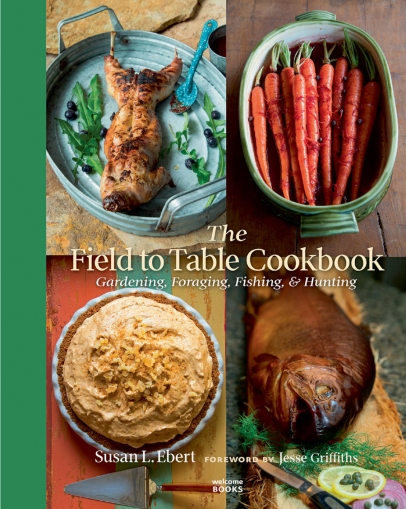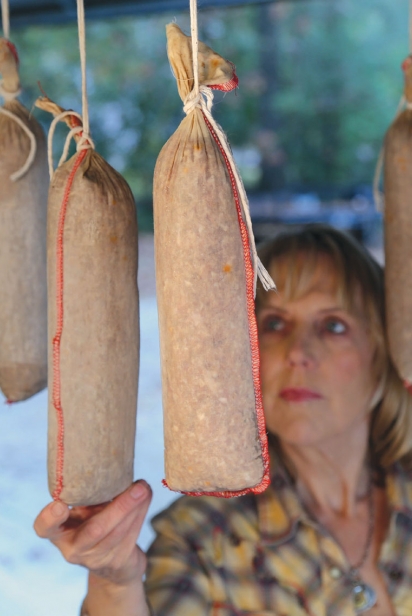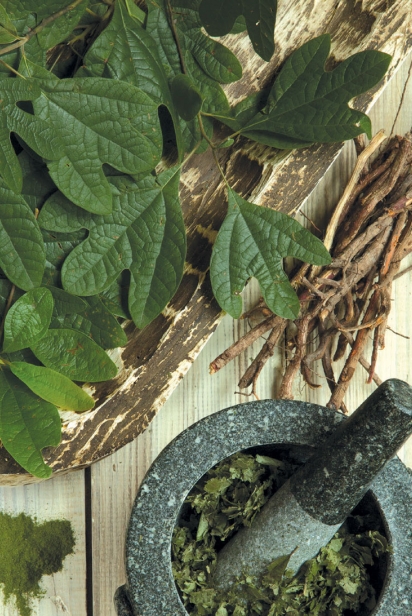A Review - Field to Table Cookbook by Susan Ebert
Consumers’ growing curiosity and concern about where our food comes from are bringing more and more locally grown products into our households and encouraging us to cook from scratch. Even school curriculums are making room for gardening and farming programs to teach children that food does not originate in a jar, a can, or wrapped in plastic from a supermarket: It is grown in a field, forest or in water, needing clean air and healthy nutrients itself.
Susan Ebert, author of The Field To Table Cookbook, knows exactly where her food comes from: she hunts, fishes, forages and grows it—and has done so for decades with a firm belief that nature’s bounty is inextricably tied together with a sustainable and respectful approach.
“I am a hippie chick with guns,” she says gleefully. “When my kids were young [they are now in their early 30s] I made my own baby food, made my own cloth diapers, grew my own fruits and vegetables, baked my own bread and shopped at the original Whole Foods—which was nothing more than a shotgun shack at the time.”
“I grew up on TV dinners and the first McDonald’s meals,” she continues, explaining that her mother was of the generation that believed women’s liberation started in the kitchen: no more cooking. Where her mother couldn’t wait to get away from the farm and never look back, Susan was drawn to her grandparents’ Kentucky farm like an ant to honey. Her grandparents hunted and fished, foraged and farmed. As a young girl, she went squirrel and rabbit hunting with her grandfather, or her papaw, as she calls him. Her grandmother—mamaw— had the grateful task of skinning, cleaning and cooking the hunted protein. Little Susan watched and learned.
Part of her motivation to grow food and cook from scratch has always been to help her kids grow up on a fresh, tasty and healthy diet. Sure, it takes more time to cook everything from scratch, but she insists: “If I could do it as a single mum with two kids and a job .... Use a CrockPot to make ketchup and save time stirring. Make your own mayonnaise; it takes only a minute.” She calls it Mailbox Mayonnaise, for the minute it takes her to walk to the mailbox and back. The eggs come from her own chickens, kept safely in the yard by dog Chloe, who likes to herd the hens.
After she finished her MA in marketing at the University of Texas in Austin, she worked for Texas Monthly and Rodale’s Organic Garden magazine— among other publications—before she joined the Texas Parks & Wildlife Department as the first woman editor and publisher of the department’s magazine in 1998.
In her years with TPWD she went all over Texas and became intimately acquainted with its wildlife on field trips with biologists, botanists and game and fishing people. One of them was conservation biologist and journalist Shannon Tompkins, now her husband and—in unequivocal terms—her soul mate and the love of her life.
It was also a time when she sharpened her hunting skills, deciding she wanted to be better prepared to take her protein directly from nature rather than buy industry meat. “It makes so much more sense to me from a philosophical point of view to spend my dollars on conservation and support the habitat, and the land and the water and the air that is used, and then make the conscious decision to pluck one animal out of that habitat, and let that habitat still flourish.”
Invariably, Susan “bawls her head off” each and every time she is successful on a hunt. “There is remorse, and thankfulness, joy and an incredible sense of awe,” she says, tears welling up in her eyes. “You know, hunting is not about painting your face like you’re going to war. It is not about that kill shot or high-fives. There is a spiritual side to hunting and being out there in a majestic place. You need to take full responsibility for taking a life and honoring that life. Not with a high-five but with a prayer. It is very important to me to communicate that!”
From Dandelion Fritters, Pickled Redbud Blossoms, Duck & Venison Gumbo, Speckled Trout Ceviche to Muscadine Grape Hull Pie and Black Walnut Cream, the Field To Table Cookbook shares a wealth of wild gastronomy. Beautifully illustrated with 175 seasonal recipes that spell “try me” at every page turn, the book is a home cook’s (or chefs’ for that matter) treasure trove of wild-foraged and garden-grown ingredients, and what to do with them.
An eye-opening part of the book are the essays full of personal anecdotes and facts and figures on what to look for, when to look for it and how to harvest it without disturbing the habitat. Susan has an engaging way with words and it makes the reader part of the adventure: Wading through shallow water, looking for salicornia and taking the harvest back to pickle; cutting sassafras and drying it to make filé powder; balancing in a pirogue quietly hoping for the bass to bite, or hauling in a crab trap; anticipating what comes next when she casually writes: “I use that weak light to scan the grasses for any movement. You see, this county’s alligators outnumber humans by three to one.”
Susan Ebert approaches the natural world as her wholesome, organic grocery store, with an understanding and respect to take only what she needs when nature is ready to give it, and help keep the natural world restored and well stocked. It is empowering when you take charge of your food sources and discover what nature can provide, even if it is simply picking wild berries or digging for clams. It is what the book conveys best with every recipe, every essay and every image, and in doing so invites us to take a closer look at the wilderness around us.
The Field To Table Cookbook is available from Amazon.com and will hit bookstores nationwide March 22, 2016.







